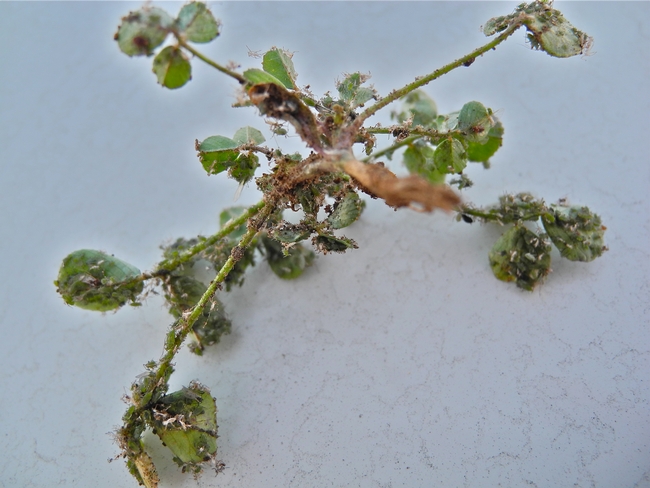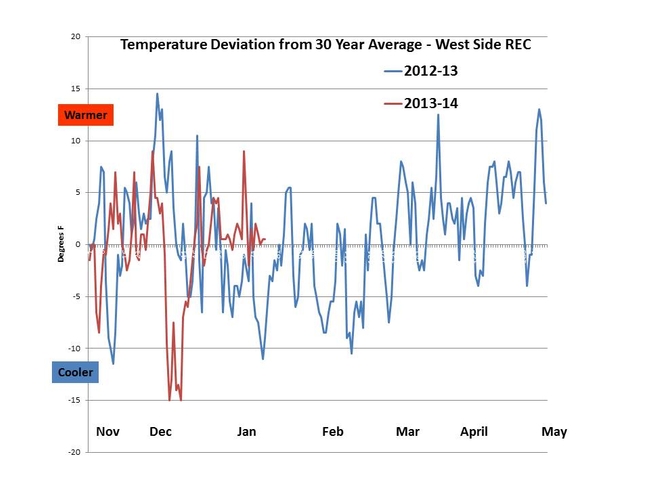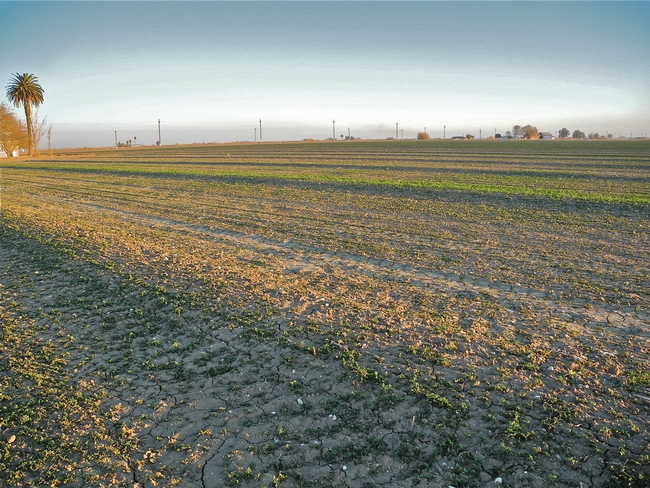Early reports are coming in from PCAs that Blue Alfalfa Aphid (BAA), as well as other common aphids, are already making their appearance in alfalfa.
In 2013, there were widespread but localized outbreaks throughout southern and central California including locations in the Imperial, Palo Verde, Antelope, and San Joaquin Valleys. Within the San Joaquin Valley, western Kern and southwestern Merced County were most severely affected.
This earlier than normal aphid appearance has come as a surprise as many alfalfa fields are not normally being scouted during January. The attached photos indicate the severity of the build-up on seedling alfalfa. Reports from Merced and Kern Counties indicate early and high populations.
We do not understand all the reasons for this outbreak but a key factor may well be our dry and warm conditions. The lack of moisture has limited fungal infestation and reduced stress on aphid populations. Lack of fog may also be influencing population development. The cool nights and warm days provide average daily temperatures which are reportedly conducive for BAA (See previous Blog posts by Barlow; //ucanr.edu/blogs/blogcore/postdetail.cfm?postnum=9640). While some December days were cooler in 2013 than 2012, January 2014 has been warmer than 2013 and the 30 year average.
UCCE farm advisor Carol Frate remembers that several years ago, when another unusually warm January occurred, a number of established alfalfa fields in Tulare County experienced damaging levels of cowpea aphid. This aphid thrives under warm and even hot conditions, making the January damage very surprising. While watching for BAA, also keep an eye out for the cowpea aphid. For aphid identification tips, see Godfrey’s previous Blog post (//ucanr.edu/blogs/blogcore/postdetail.cfm?postnum=9639)
In an effort for to stay on top of the aphid outbreak in 2014, readers are encourage to report their observations via this survey link (https://ucanr.edu/survey/survey.cfm?surveynumber=12133). The survey is 4 questions and should only take a few minutes to complete.
Management of aphids in alfalfa will likely be challenging in 2014 based on their early appearance and last year’s problems. Insecticide options are limited, especially prior to alfalfa weevil season. Cultural controls (primarily early cutting for some aphids) are not acceptable at this stage of the season. Biological control was weaker last year and early appearance of aphid will challenge natural enemies to catch up.
Communication and networking within the alfalfa community will be extremely important in any success we can have. Follow this blog closely and watch for information as it becomes available.

